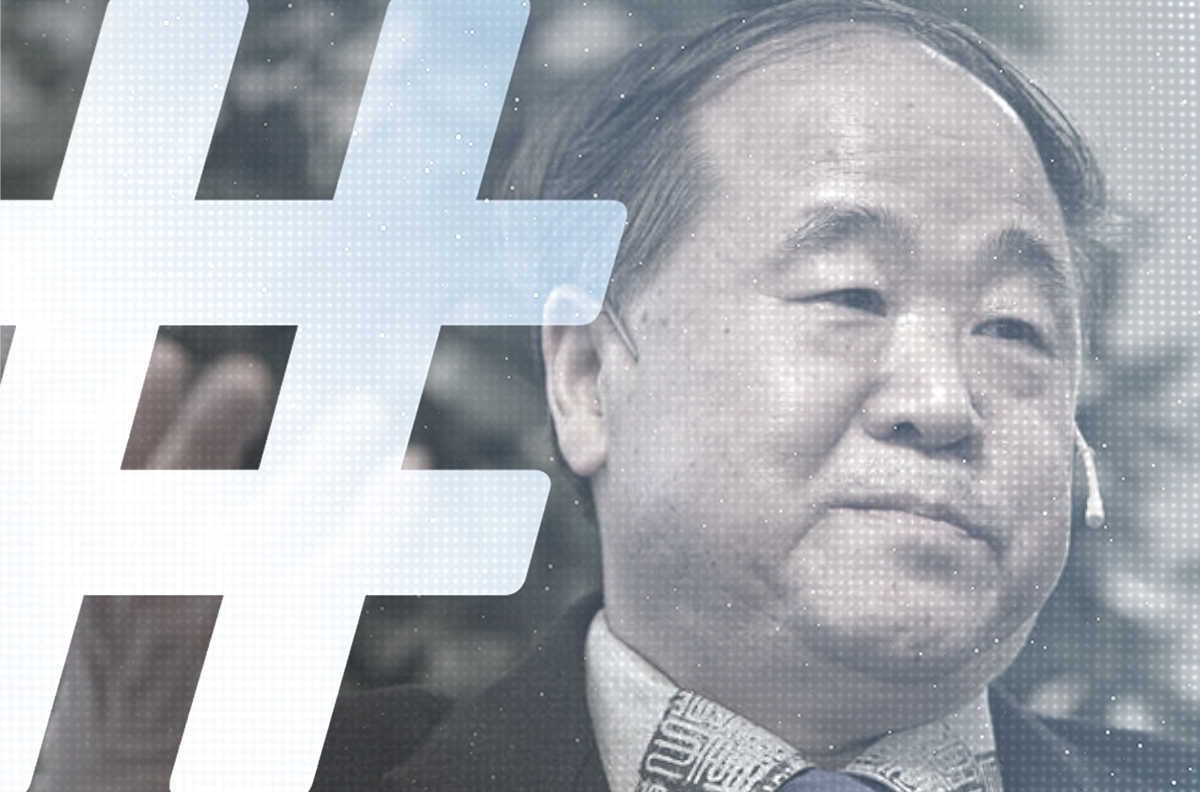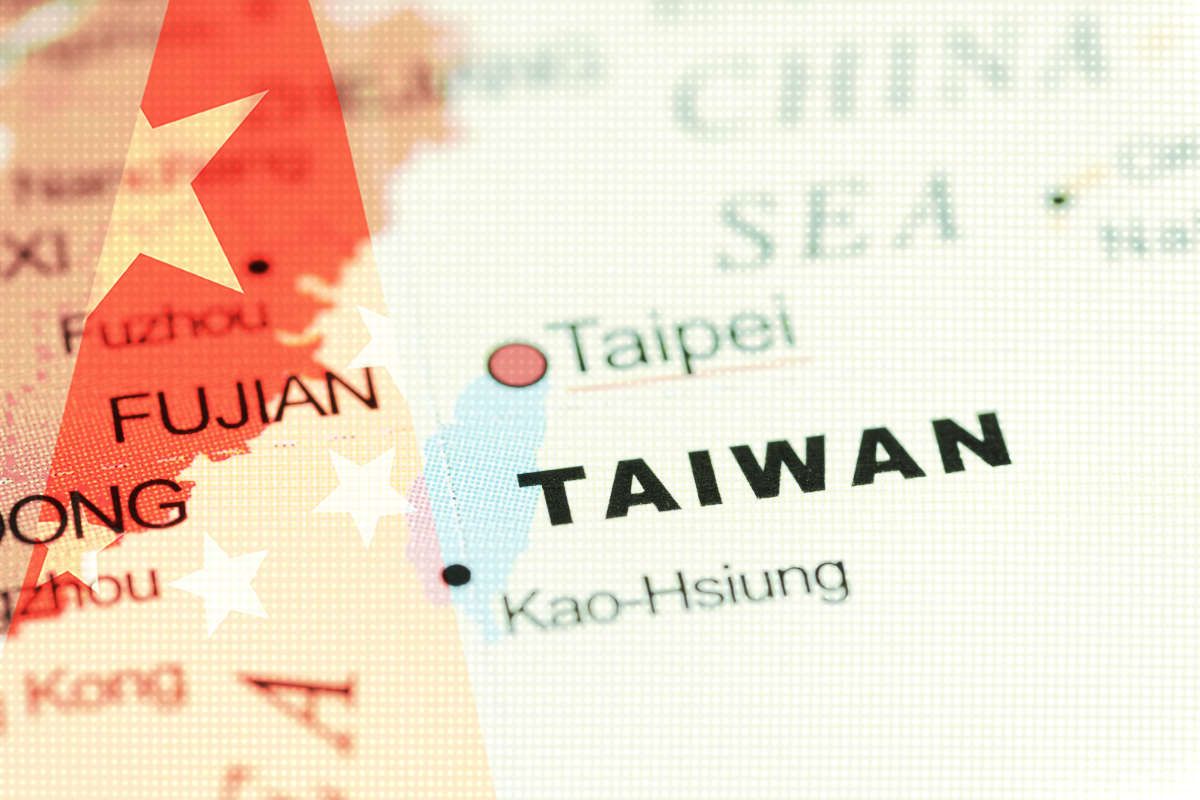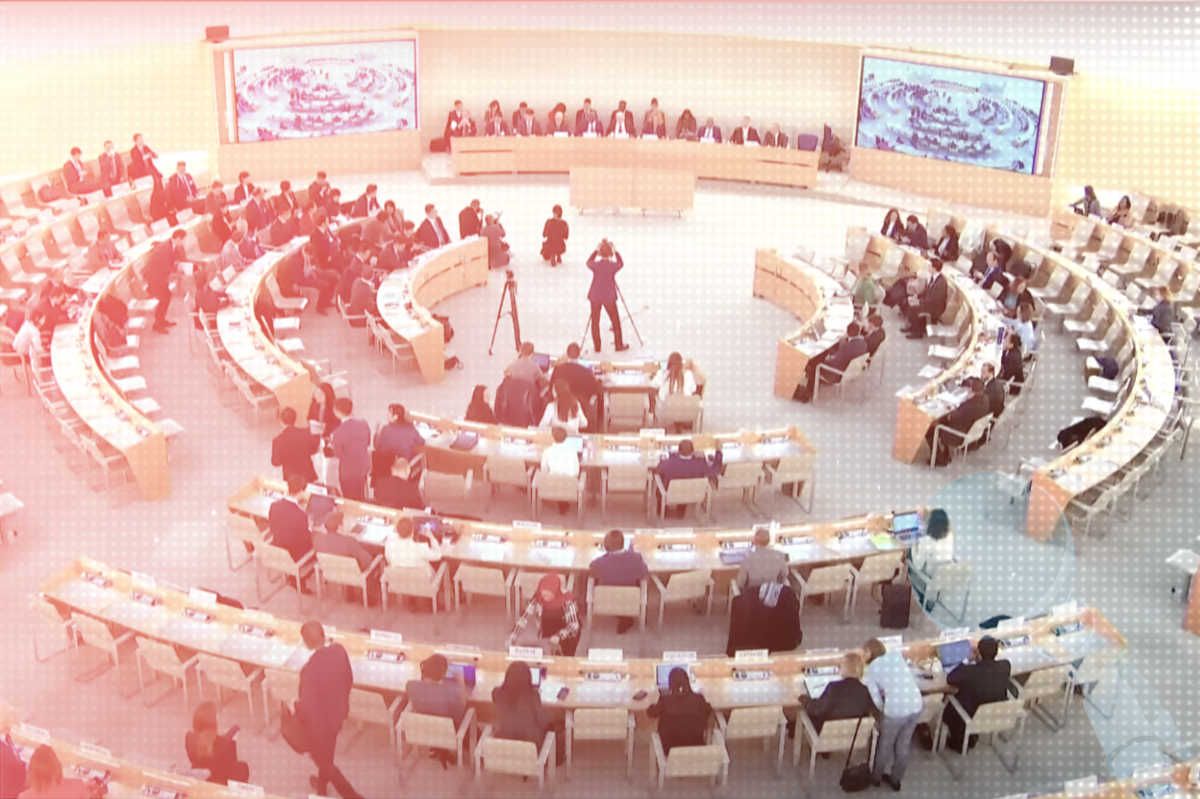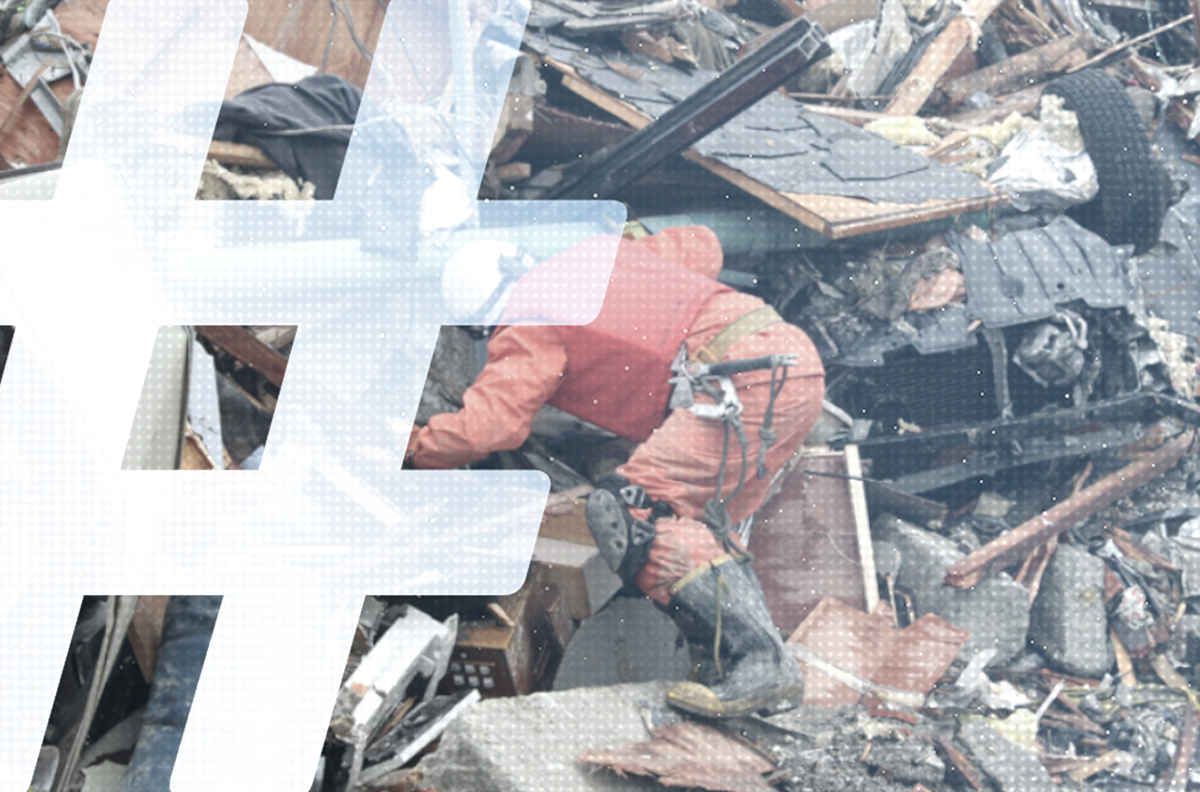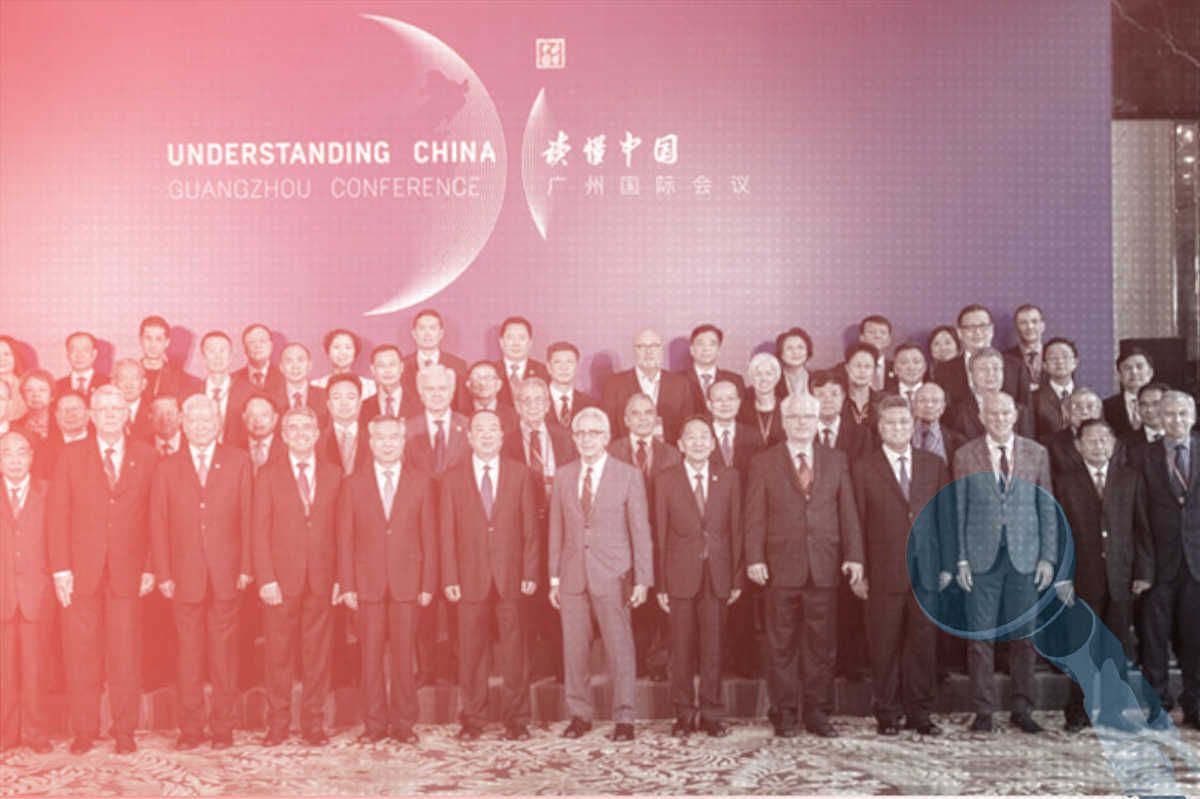For months, doubts and accusations have swarmed on the margins of China’s high-profile push to develop its high-speed rail system. But harder questions — about corruption, waste, quality, safety, service and intellectual property — were submerged by feel-good propaganda, pushing claims of technological superiority to win political points.
The crash of a high-speed train near the city of Wenzhou over the weekend has whipped up a new wave of public anger toward the Ministry of Railways — and toward the government more generally — and brought a new and frenzied sharing of information online, even as authorities have moved quickly to stem media coverage.
For many Chinese, one of the most infuriating aspects of this story has been the government’s apparent unwillingness to answer the most basic questions, and its tendency to fall back on cryptic responses and tired propaganda memes.
On July 12, Chinese media asked how a lightning strike had caused a serious malfunction on July 10, why there was no contingency plan, why passengers had not been compensated, why backup power systems had not been used (leaving passengers in stifling hot cars)? Responses from the Ministry of Railways were not forthcoming, even as more malfunctions and delays piled up on July 12 and 13. The official line from the ministry last week, as delays continued to become an issue, was that it was only natural that the high-speed rail needed time to work out the kinks. To which Chinese internet users asked scathingly whether the Ministry of Railways thought Chinese passengers were lab rats (实验品). [NOTE: Correction made here to note that the above-mentioned criticism of the ministry’s statements came from web users, not the Legal Mirror, which was the news story source.]
The tension between real answers and propaganda cageyness seemed to boil over at yesterday’s press conference with Wang Yongping (王勇平), the Ministry of Railways spokesman who arrogantly asserted on July 7 that China’s high-speed rail was far superior to Japan’s Shinkansen, and that the two “cannot be mentioned in the same breath.”
When Wang was asked yesterday how it was possible that a five-year-old girl was found alive after officials had declared an end to the search and rescue, Wang responded: “That was a miracle . . . ” Shouts erupted among the reporters, “It is NOT a miracle! It is NOT a miracle!”
This was a flat rejection of the familiar propaganda meme of love, unity and selflessness in the face of tragedy. The reporters didn’t want to hear more feel-good nonsense. They wanted to know exactly why the girl had not been found earlier, and what her discovery revealed about the nature and handling of the search and rescue itself.
But propaganda directives leaked online suggest Chinese authorities are doing their utmost to play on the emotions of the public, building a story about tragedy overcome. Their answer to real questions and concerns is to peddle more feel-good nonsense.
The directives read:
“On the Wenzhou train collision accident, various media must report information from the Ministry of Railways in a timely manner, media from various regions must not send reporters [to the scene] to report the story, and child papers and magazines as well as websites must especially be managed well [EDITOR’S NOTE: This refers to commercial newspapers and magazines like Southern Metropolis Daily and
Caijing]. Links must not be made to the development of the high-speed rail, and reports looking back (反思性报道) must not be done.” [EDITOR’S NOTE: Reports “looking back” refer to reports that investigate the causes of an event and make suggestions, for example, about government responsibility.]
“Latest demands on the Wenzhou train collision accident: 1. Figures on the number of dead must follow numbers from authoritative departments; 2. Frequency of reports must not be too dense; 3. More reporting should be done on stories that are extremely moving, for example people donating blood and taxi drivers not accepting fares; 4. There must be no seeking after the causes [of the accident], rather, statements from authoritative departments must be followed; 5. No looking back and no commentary.
” . . . From now on, the Wenzhou train accident should be reported along the theme of ‘major love in the face of major disaster’. No calling into doubt, no development [of further issues], no speculation, and no dissemination [of such things] on personal microblogs! . . . ”
The culture of propaganda that has defined the railway ministry’s response after and leading up to the July 23 tragedy is in great measure responsible for the failings of China’s high-speed rail, as well as serious safety concerns and accidents that have plagued other major infrastructure projects that have gone forward without public scrutiny. Saturday’s accident is an indictment of China’s prevailing political culture, of which propaganda and information controls are an central part.
That culture operates without independent scrutiny, prioritizing grandiose visions — a Great Leap Forward mentality — over basic public concerns like safety and fiscal accountability.
On that note, it’s well worth revisiting a front-page piece that appeared in the Party’s official People’s Daily in December last year, six months before the formal launch of the Beijing-Shanghai High-Speed Rail. The piece valorizes a train engine driver, Li Dongxiao (李东晓), who was called upon in 2008 to master the “world’s most complex” train in just 10 days under a “dead order” from Chinese government leaders, before piloting his first train back to Beijing at 350 km/hr.
Simply assuming these details compact the sense of Li’s heroism, the People’s Daily piece emphasizes that Li and his colleagues — none of whom had even college educations — had to rely on instruction manuals that had been translated from German by an outside contractor, rendering many of the terms “extremely strange.” At one point, Li heroically bets his German trainer, who shakes his head and says it’s impossible to master the train in under 2-3 months, that he can do in 10 days.
The piece, partially translated here, now reads as a portrait of folly mistaken for glory.
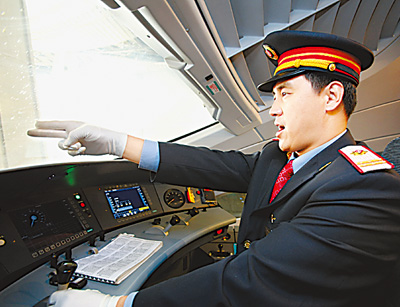
Li Xiaodong, “Pioneer of Increased Speed”
(Pioneers of Our Day Series)
People’s Daily
December 14, 2010
PG 01
Li Dongxiao (李东晓) is a middle school graduate, an ordinary [engine] driver, but he has created many firsts for China’s high-speed rail. He passed the exam for high-speed rail operating permit 001, he chalked up the first world speed record for China’s high-speed rail, he trained the first generation of high-speed train [engine] drivers, and participated in the creation of China’s first training manual for the high-speed rail . . .
Diligent Study and Strenuous Training, Aspiring to Work, [Being Able to] Drive a High-Speed Train Home within 10 Days
Li Dongxiao, who stands at 1.8 meters tall, with big eyes and bushy eyebrows, crisply dressed in his uniform, is like a name card for the Transport Depot of the Beijing Railway Bureau. This is not just because he has been a train engine driver for the past 20 years, with no accidents, his skills refined, but because he is inseparable from China’s first high-speed railway, the Beijing-Tianjin intercity line.
On March 16, 2008, Li Dongxiao was among 10 engine drivers with the Transport Depot of the Beijing Railway Bureau to be selected as the Republic’s first group of high-speed rail drivers, and ordered to undergo driver training at Tangshan Railway Vehicle Co. Ltd. At that time, Li Xiaodong and his colleagues had never seen the domestically-made CRH3 high-speed trains, and they didn’t even know how many controls there were in the cab of the engine.
But the countdown had already started. On August 1, the Beijing-Tianjin Intercity Line was set to formally begin serving the Beijing Olympic Games, subject to review from passengers from all over the world. On July 1, the Beijing-Tianjin Intercity Line would enter its trial run period. The four months prior to this, the trains would have to run a total of 400,000 kilometers, the equivalent of 10 runs around the earth’s equator, completing adjustment and testing of the line system, signals, electrical supply, [passenger cars] and other areas.
An extra day of testing and adjustment means an extra thread of safety and comfort for passengers. The superiors [in the government] sent down a “dead order” [ie, and incontrovertible command]: They would train for 10 days, and after 10 days they must take their first train home to Beijing at a speed of 350 km/hr!
“Without two or three months, you guys can’t drive these out of here!” German expert Mark (?), who was leading the training at Tangshan Railway Vehicle, said, shaking his head. Beginning from zero, and only using 10 days to drive the world’s most advanced and most complex high-speed trains, [he said], this is an impossible task to complete.
“In just 10 days, not only did we have to learn it, we had to drive the trains back to Beijing!” Li Dongxiao [said], refusing to concede defeat.
“Well then, let’s make a bet! We definitely can drive them back in 10 days!” Li Xiaodong responded with more confidence than Mark. He coveted the badge pinned on Mark’s chest — a badge representing the highest driver qualification within the German high-speed rail system.
The difficulty and complexity of these engines was unprecedented. The CRH3 trains traveled at a speed of 350 km/hr, the fastest trains in the world. The structure of the train was complex, the [overhead] lines were thick as spider webs, connected to hundreds of thousands of component parts. There were more than 2,000 error codes alone.
The level of difficulty of engine operation was unprecedented. While [ordinary] trains had just over 10 switches on the dash [in the cab], the high-speed train had 40 or 50. Each operation was a combination of moves, and decisions had to be made in the wink of an eye, because in just one second the train moved ahead 97 meters. There was no room for error.
The level of difficulty of the [operational] instructions was unprecedented. The “Technical Materials on the CRH3 Train” is a 670-page volume “brick” written in German. The translation was outsourced by the railway ministry, and some of the technical terms were translated in extremely strange ways. Add to this the fact that the knowledge covered in the manual covered areas that were new [to the drivers], such as computers, material [science] and mechanics, and there was not a single college graduate among Li Dongxiao and his colleagues, so they had to study from scratch.

[ABOVE: The July 25 edition of Shanghai’s Xinmin Evening News reports on the front page the story of a five-year-old girl found after officials announced an end to the search and rescue effort. The headline reads: “The Miracle of a Life.” The coverage fits nicely with orders from the Central Propaganda Department demanding coverage of the train disaster focus on “stories that are extremely moving.”]
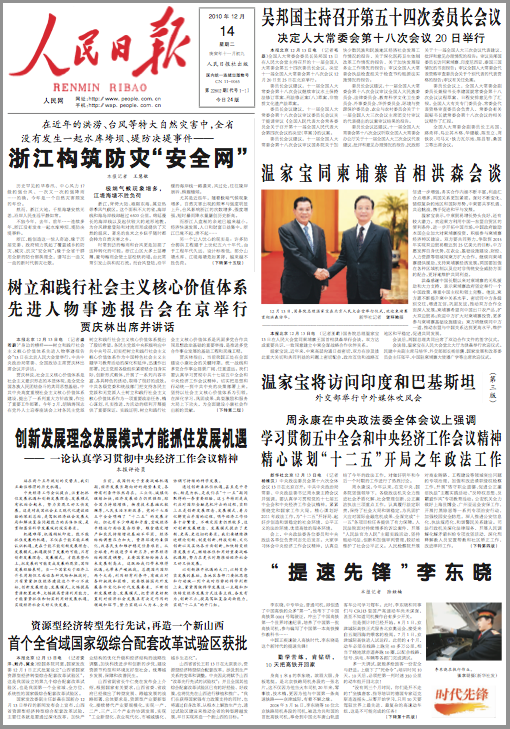
[ABOVE: The front page of the December 14, 2010, edition of the official People’s Daily, with article on Li Dongxiao at bottom-right.]








